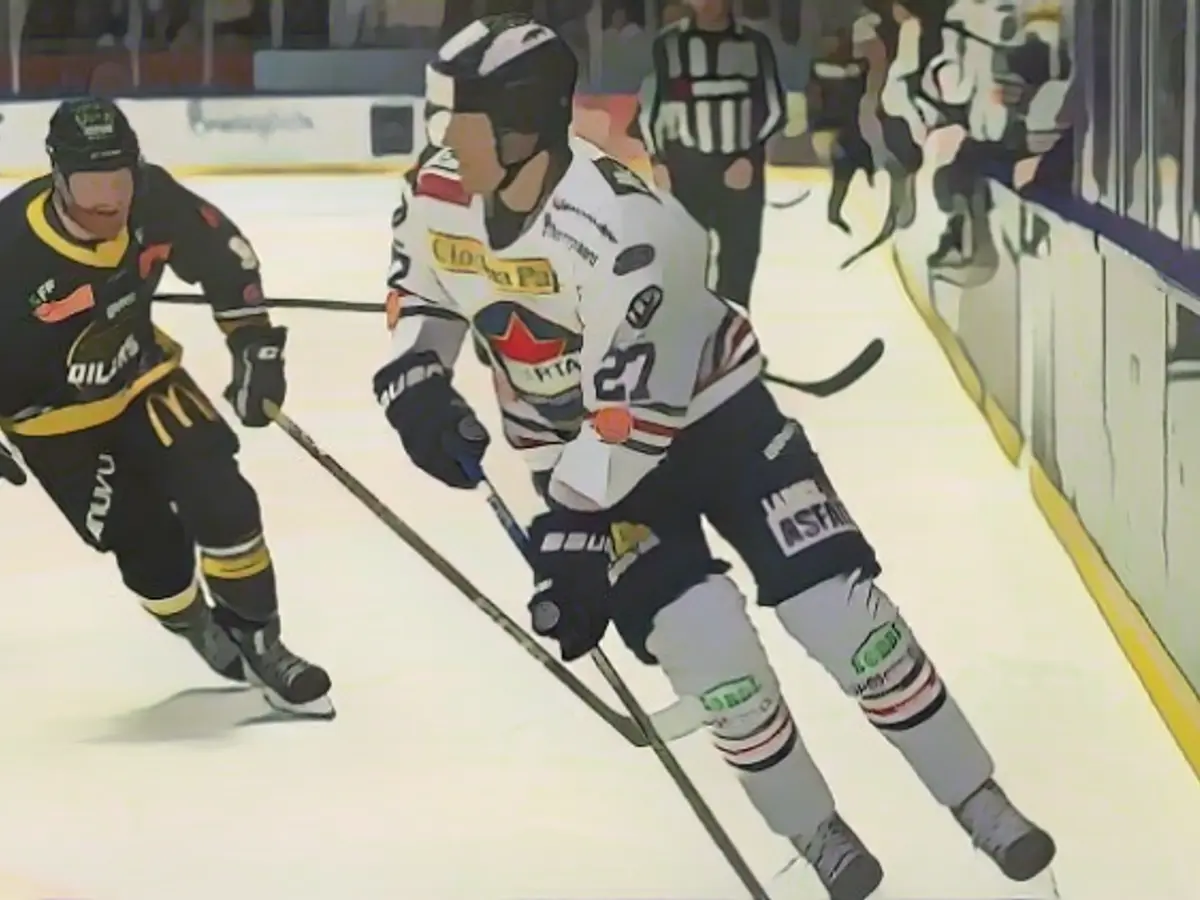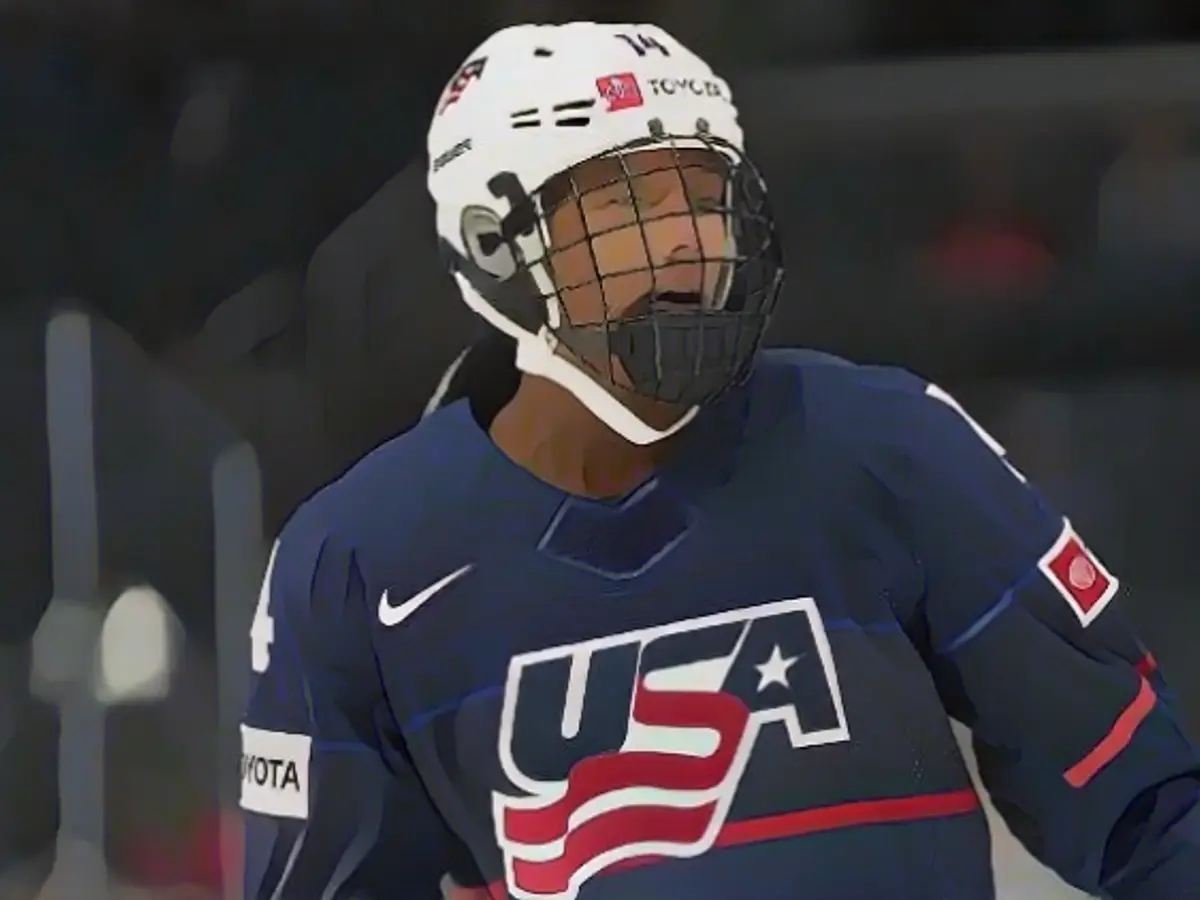Ice Hockey's Unfortunate Repeat: Another Chest Slashing in Norway
The chilling resonance of a horrific ice hockey incident lingers as the sport once again grapples with a terrifying ordeal. In this instance, it's Norway that's in the spotlight, with 19-year-old defender Jonas Nyhus Myhre being the latest victim of a chest-slashing attack, this time courtesy of an opposition skate blade. Speaking to Swedish newspaper "Aftonbladet," Myhre shared his harrowing experience, expressing relief that things could have been worse.
The incident unfolded during a match between Lörenskog IK and Storhamar Hockey, leaving Myhre with bruises and pain that only intensified five minutes after the attack. The assailant's skate blade had pierced through his protective gear, resulting in a painful wound that required immediate medical attention. Devastatingly, Myhre will not be able to participate in the U20 World Championships in Sweden, scheduled for December 26 to January 5, a blow that has left both team and fans heartbroken.
As the community grieves the recent passing of former Augsburg player Adam Johnson, who succumbed to a skate blade injury to the neck last October, Myhre highlights the persistent need for enhanced safety measures in ice hockey. Following Johnson's tragic incident, the German Ice Hockey League (DEL) mandated cut-resistant neck protection for their players, effective from January 1. The International Ice Hockey Federation (IIHF) also made neck protection mandatory, although the implementation date remains unspecified due to supply difficulties faced by manufacturers.
Despite these efforts, chest slashes remain an alarming issue in ice hockey. Now more than ever, it's crucial for the sport to reevaluate its safety protocols and implement additional measures to shield its players from such incidents.
Amplifying Skate Blade Safety
To combat ice hockey's troubling history of serious injuries, several strategies can be employed:
- Advanced Blade Technology Introduce corrosion-resistant alloys to boost blade durability and lower the risk of blade failure.
- Customizable Blades Utilize precise sharpening techniques to preserve blade performance, thereby reducing the likelihood of edge irregularities.
- Safety Guards Incorporate slash guards such as Easton's Pro Slashguard to safeguard the slash zone and minimize chest slashes and other injuries.
- Off-Ice Training Leverage off-ice training tools, like DriBlades, to develop players' skills and strength without the hazards of on-ice accidents.
- Regular Maintenance Ensure skate blades are in pristine condition, as regular maintenance enhances safe on-ice performance.
- Player Education Instill awareness among players regarding safe skating practices – such as avoiding unnecessary contact and retaining control of their blades – to mitigate the probability of severe injuries.
By implementing these strategies, ice hockey can significantly bolster its skate blade safety measures, significantly reducing the risk of serious injuries like chest slashes.
Relevant Insights
Exploring additional safety measures proposed to minimize chest slashes and other injuries in ice hockey includes:
- Face Masks During Penalty Corners The International Hockey Federation (FIH) has enacted a rule that mandates face masks during penalty corners in all FIH competitions, prioritizing athlete welfare and safety[1].
- Visors and Helmets While not directly addressing chest slashes, the use of visors and helmets has long been an integral safety measure in hockey to shield players from head and facial injuries. The NHL has adopted visors as part of its Collective Bargaining Agreement, signaling a shift towards increased player protection[2].
- Rule Changes in High School Field Hockey The NFHS Field Hockey Rules Committee has authorized the option for high school players to wear wire-caged face masks during penalty corners, aiming to prevent facial injuries. Players must remove these masks once the penalty corner concludes to avoid a player misconduct penalty, should they remain within the 25-yard area[4].
These measures serve to fortify player safety by minimizing the risk of severe facial and head injuries, particularly during moments of heightened risk, like penalty corners.







